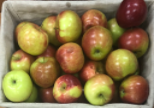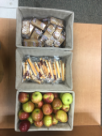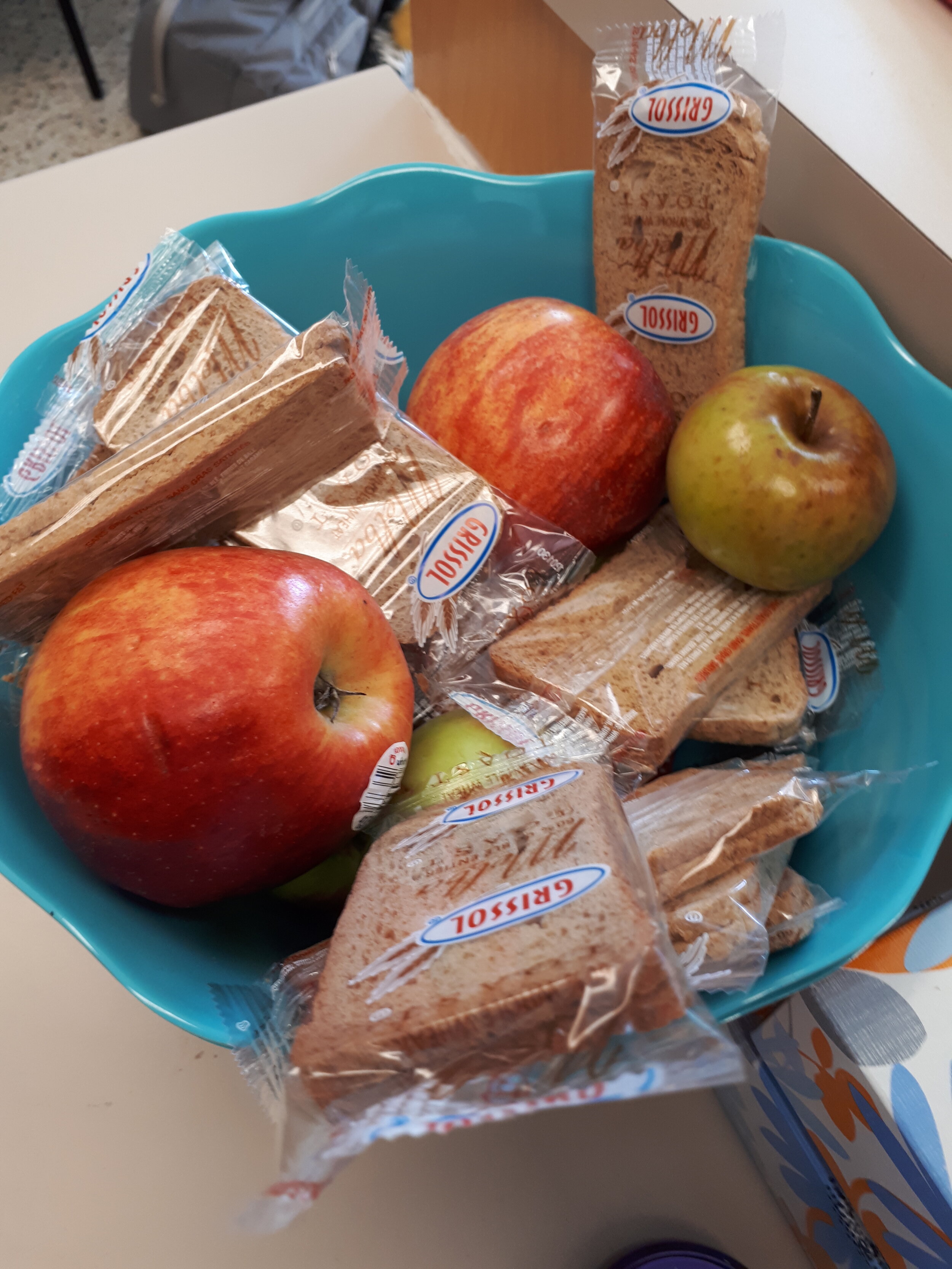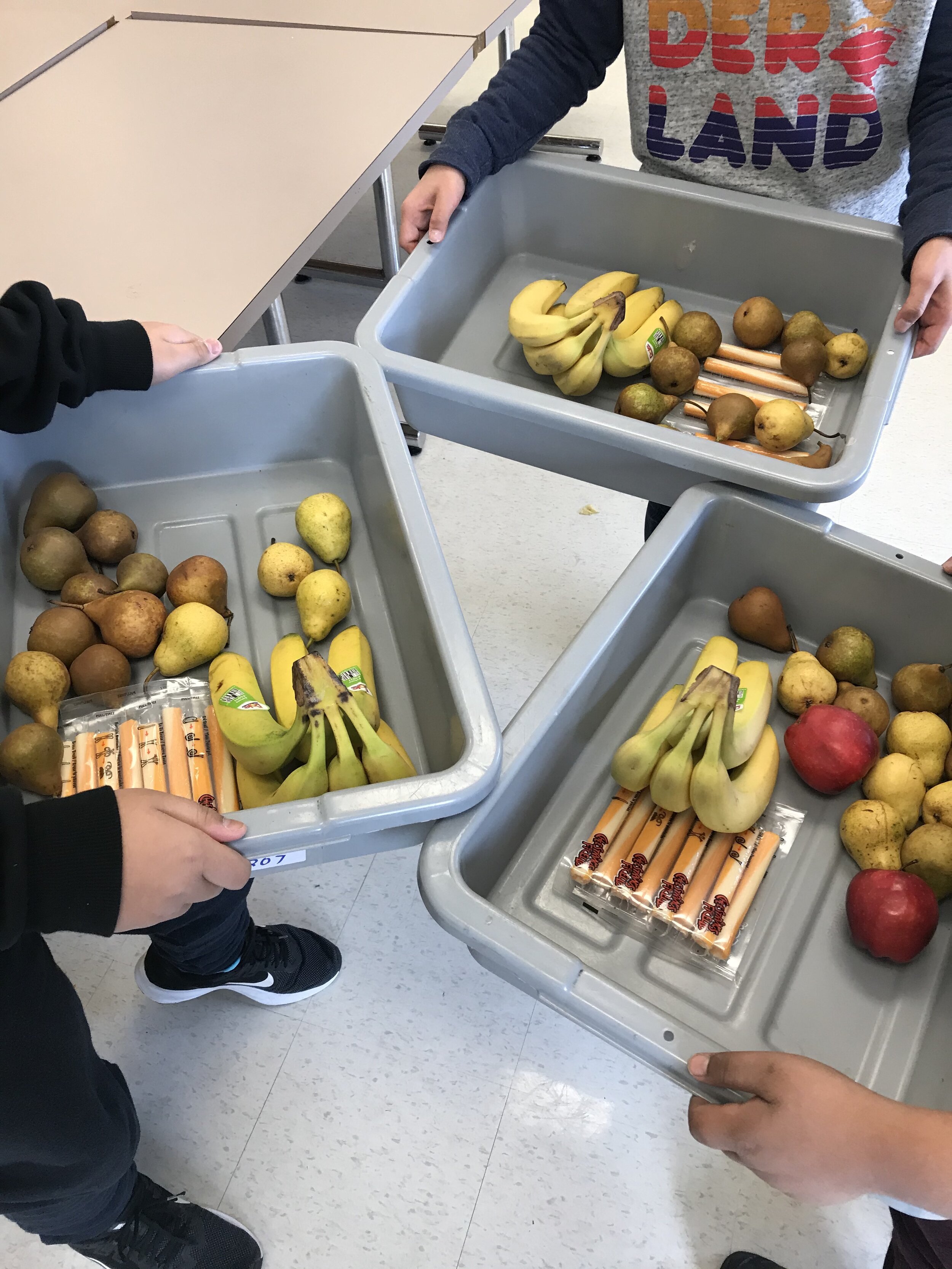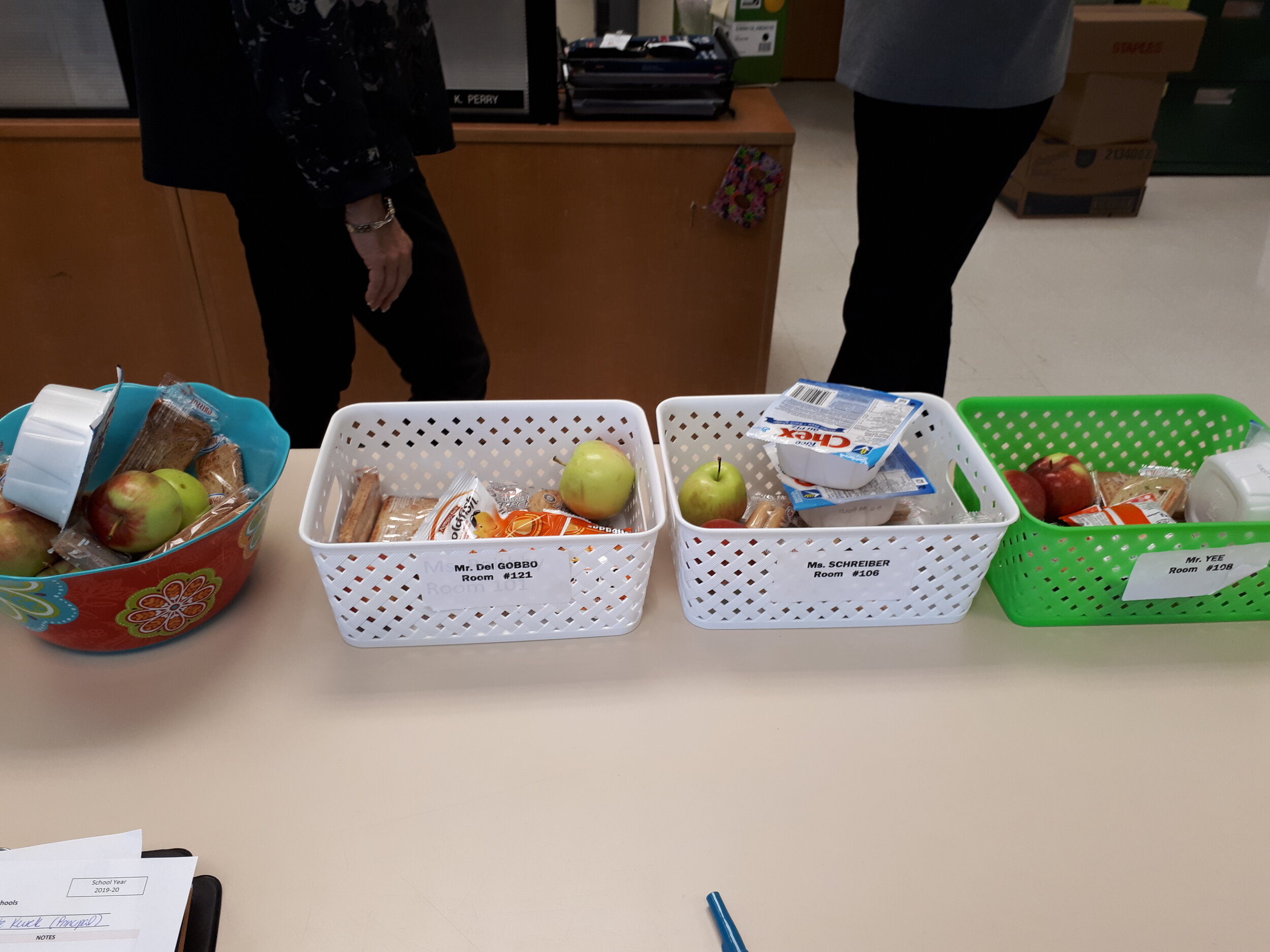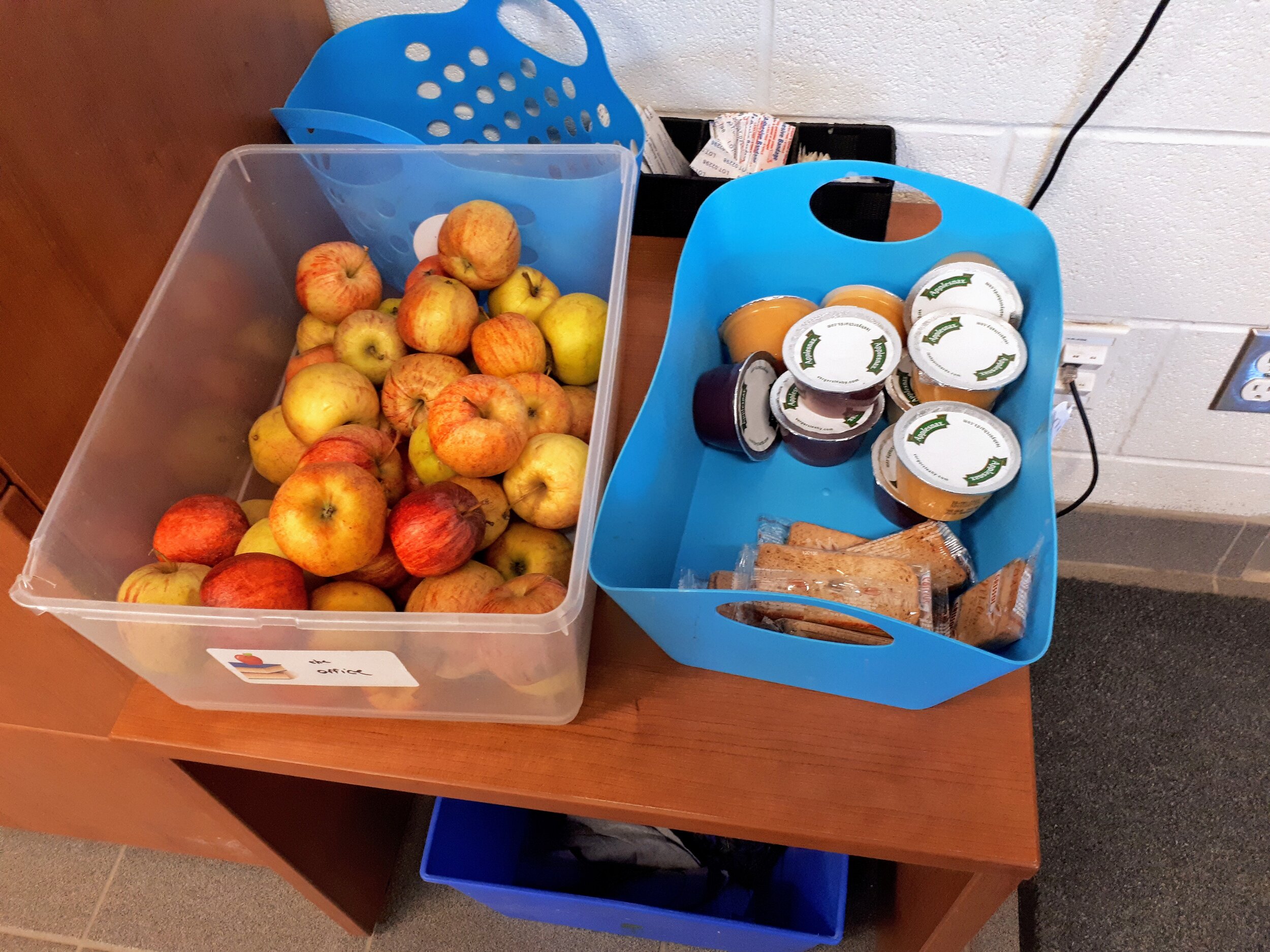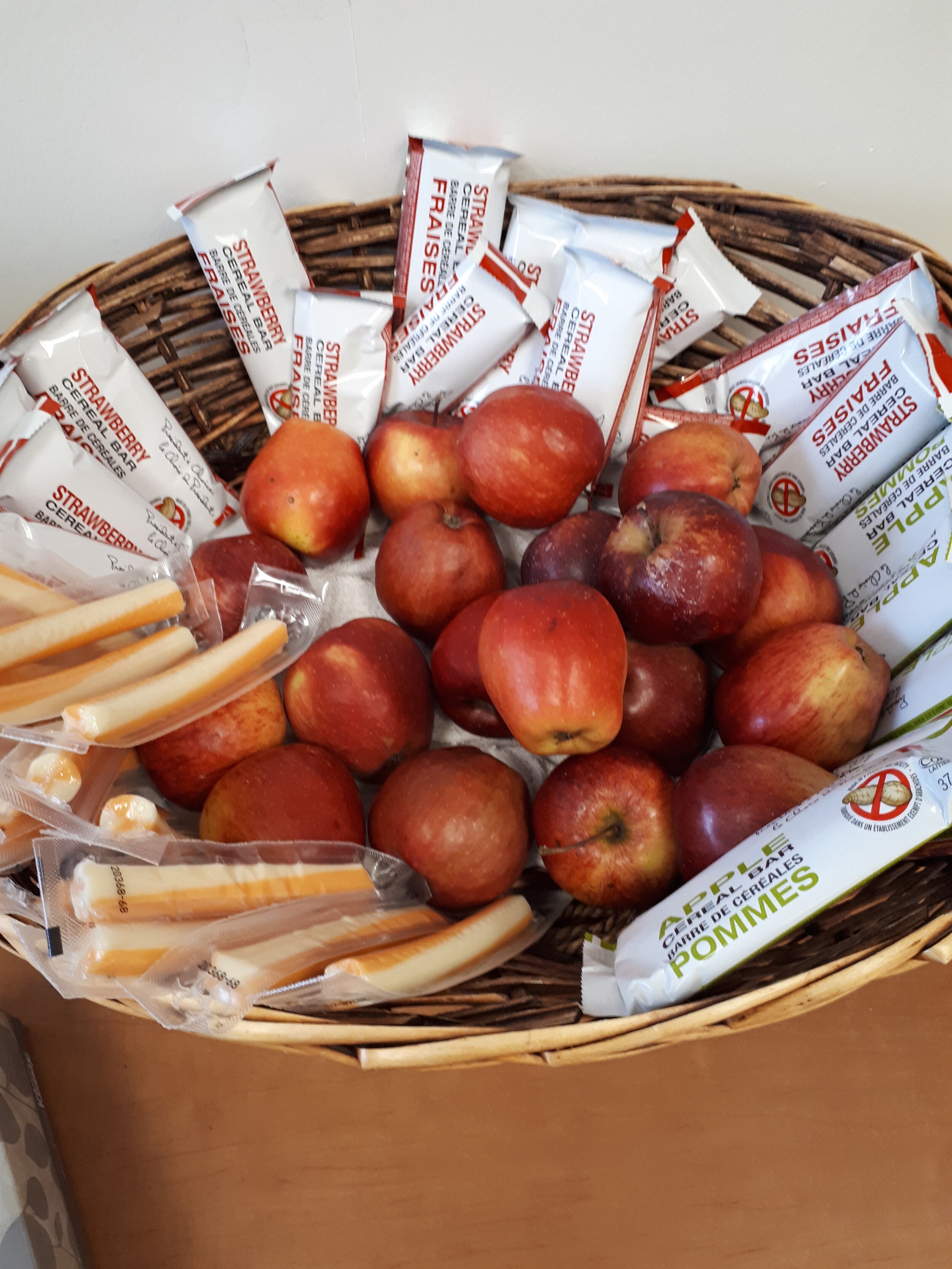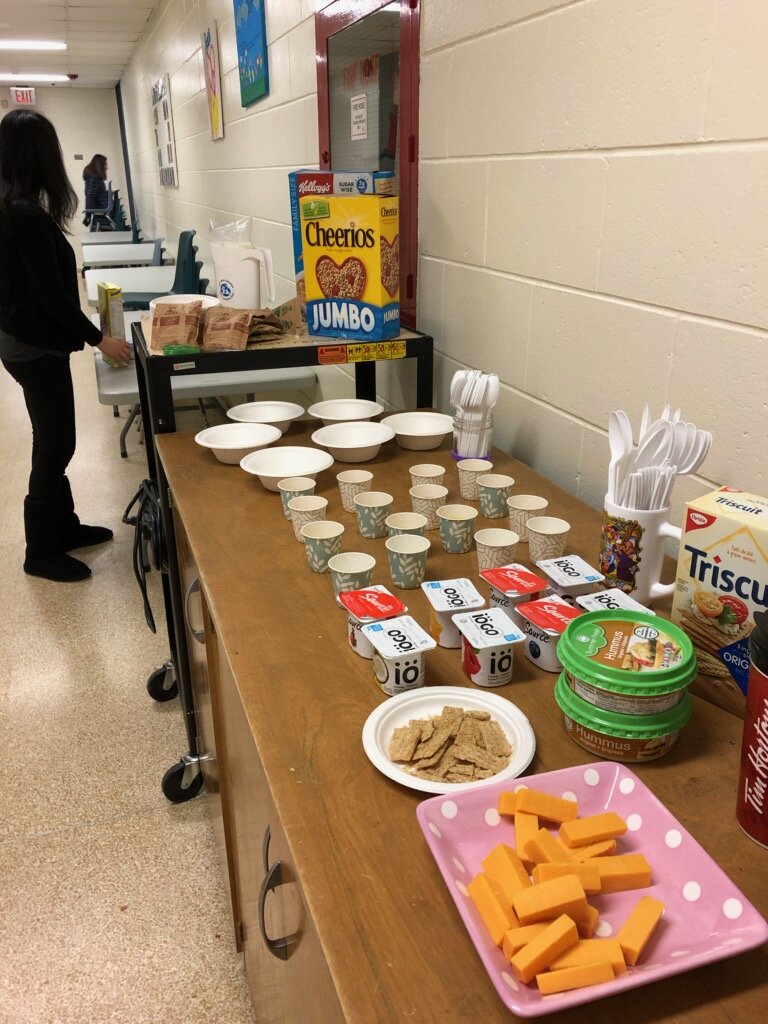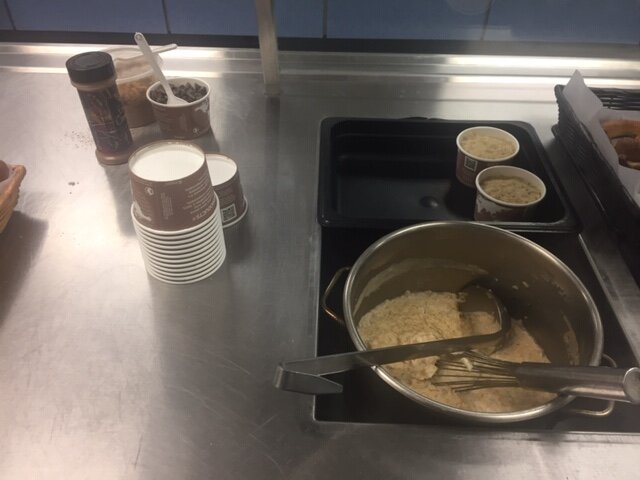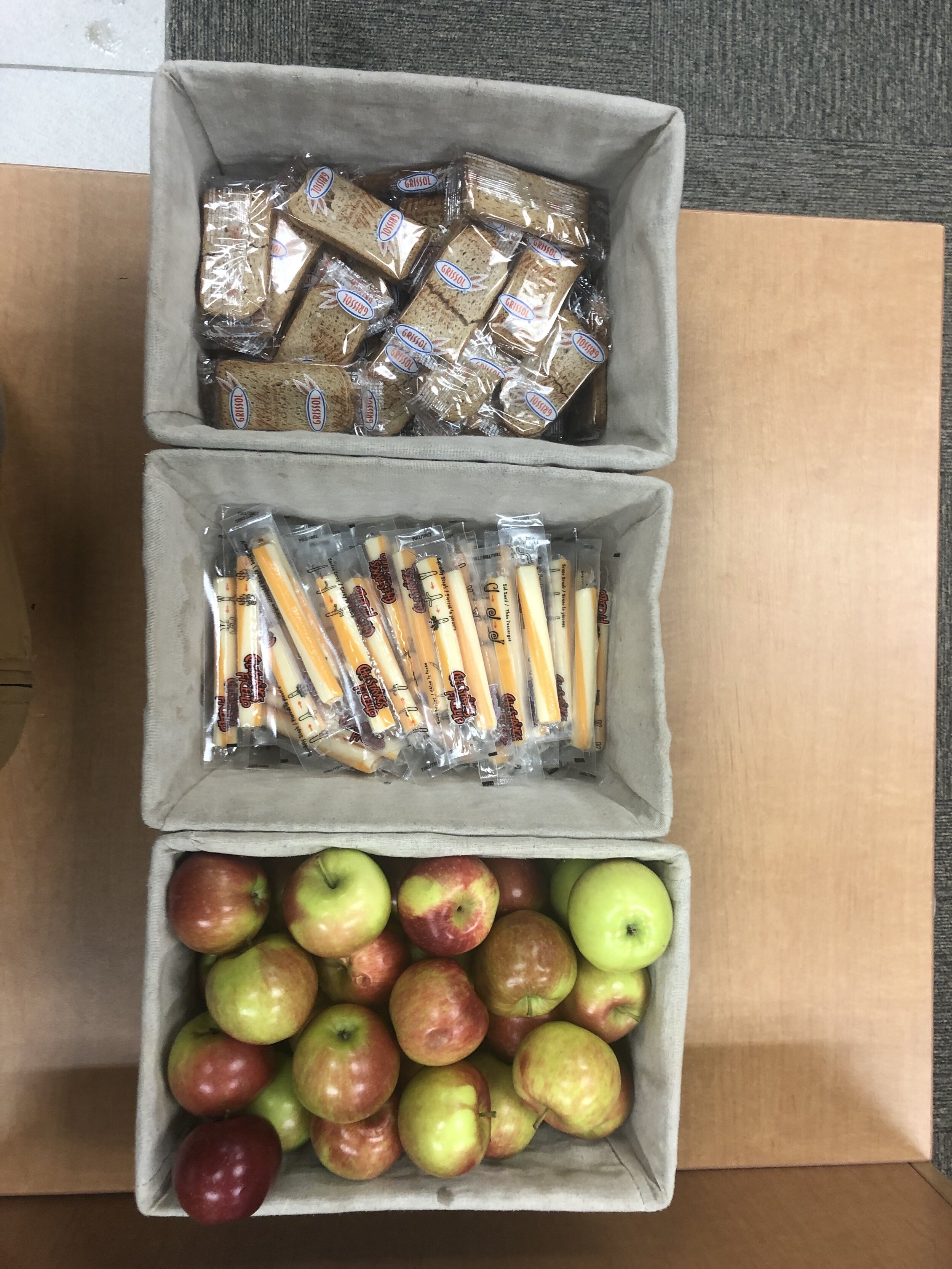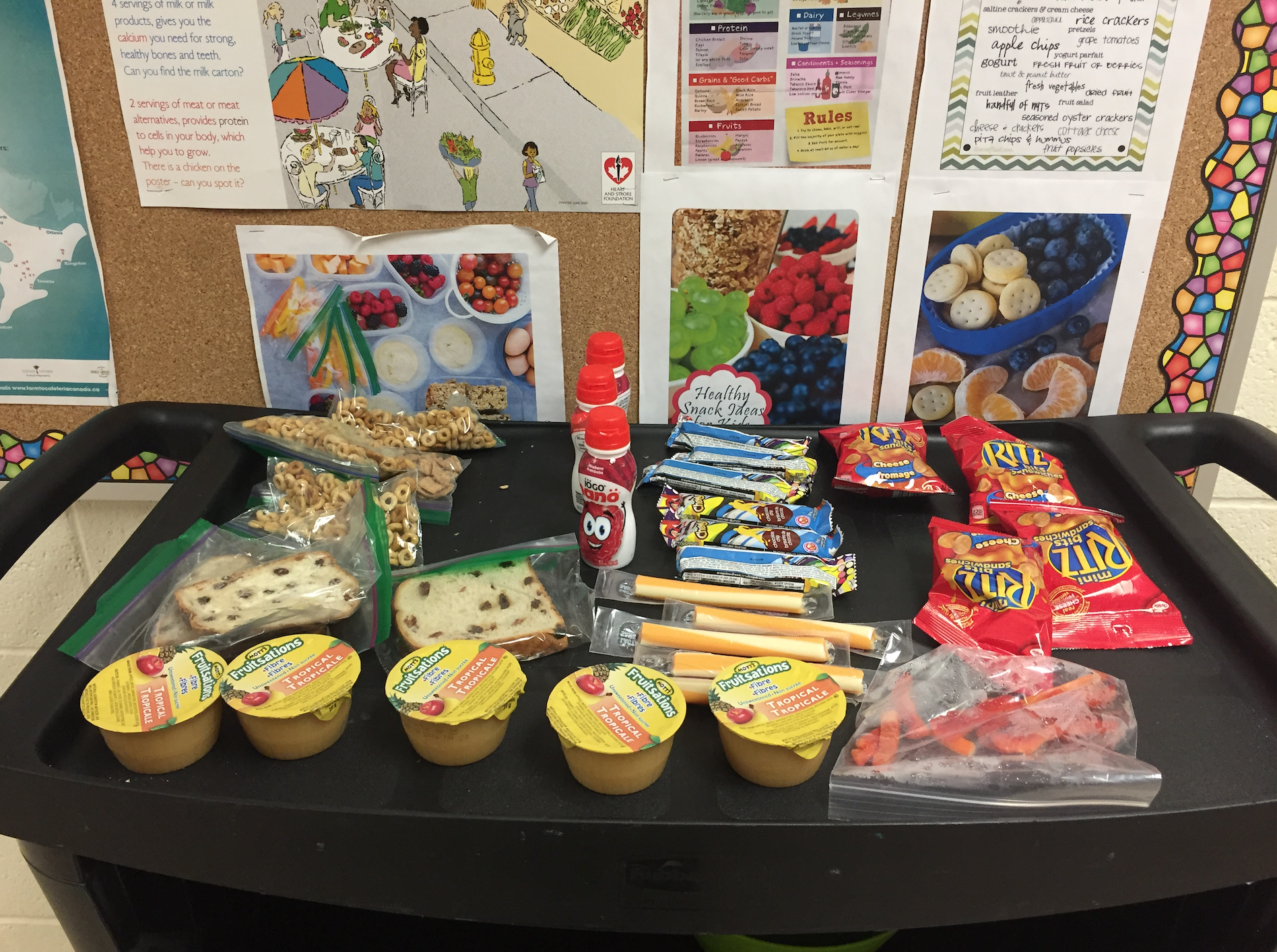Serving Food:
Ideas how to offer food to students
Whether you offer a school snack or breakfast program (or both), you need to think about how and where the food will be distributed to the students and what equipment and supplies you need.
Ministry guidelines outline that all programs are universal and accessible by all students in the schools. This means all students have the opportunity to participate and access the program. Programs must not stigmatize or single out participating children or youth. For example: offering a Grab N Go snack or meal in the main office may be intimidating for students and can be stigmatizing. Consider having your program in an open, neutral space with easy viewing, access, and is inviting to students.
BEST PRACTICE! Review the Pre-Planning Checklist to help you decide how to run your program.
3 METHODS TO OFFER FOOD
Grab N Go
Breakfast or snacks are offered from bins in a dedicated room, hallway, gym or a combination of locations. Students take food as individual or pre-packaged items to eat in their classroom or anytime throughout the morning or day.
Benefits: Quick way to serve a large number of students. Minimal supervision. No large dedicated space needed. Students can eat whenever they choose. Can be done with minimal staff support. Students who don’t arrive to school in time to eat breakfast before class can still eat. Cheaper (because might be less accessible to students).
Challenges: Menu options are limited. More pre-packaged foods costs more and creates more waste. Less opportunity for social interaction and nutrition education. Coolers/cooler bags are needed to keep cold items cold (if not offered from a fridge).
Classroom Bins
Breakfast or snacks are delivered directly to each classroom and the program is incorporated into the classroom schedule. (For example, during attendance or morning break.)
Benefits: Most successful because food is offered in the classroom. Higher participation rates. Doesn’t require designated space or supervision. Serving time is flexible. Nutrition education can be easily incorporated into teaching and learning.
Challenges: Clean up not confined to one space. Requires all staff support. May be perceived by some as interfering with class time, but this is a good opportunity to educate about the benefits of healthy eating at the school. Menu options are more limited.
Sit-Down
Breakfast is prepared in the cafeteria, on-site kitchen or dedicated room. The room is set up for a large number of students in one location. Hot foods can be offered because equipment is available (toaster, stove, etc.
Benefits: Large variety of menu options. Socialization. Staff and other students can act as role models. Central location. Opportunities for educational information/displays. Requires no special transportation or packaging of food and only one area needs to be cleaned.
Challenges: Dedicated space. Possibly lower participation rates. Supervision needed. Might not have enough time to finish meal before school starts. Will not reach students who arrive to school late (bus).
What is a snack and what is a meal?
One food group only: Add a second food group: Add a third food group:
Not a snack! Ministry-approved snack! Ministry-approved “meal” or “breakfast”!
